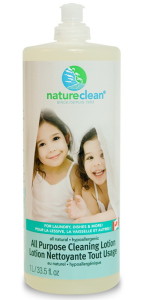When it comes to adding things to the liquids there are no rules, just trial and error.
Bottle Reservoir: Thickener
Plain water is OK when you are first starting but if you want to achieve complex shapes you need to use something a little thicker. For beginners I suggest milk; full cream and chilled. From there most people start experimenting with adding thickening agents to water.
The most popular additives are guar and xanthan gum. Glycerin as well as food & drink thickeners (such as Thick & Easy® and THICKENUP®) can also be used. I believe most of the specialst food thickners are based on guar or xanthan. ThickenUP, at least, contains xanthan gum.
A large bag of guar or xanthan like this will last a very long time as long as you keep it dry.
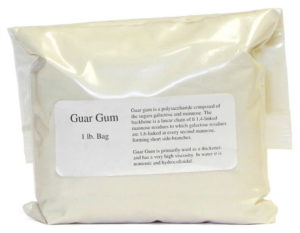
Here is my stash of guar Gum and xanthan Gum. I bought these before I knew how much I needed and over did it. I ended up throwing away about half of what I bought.
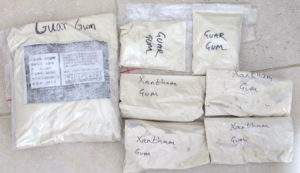
A while ago I bought some ThickenUP but have only recently started using it. I am still experimenting and I don’t really know the right amount of powder to use in 1 litre of water yet. I either make it too thin or far too thick. Need to keep experimenting. The label says it is clear but it produces slightly grey liquid when mixed with only water.
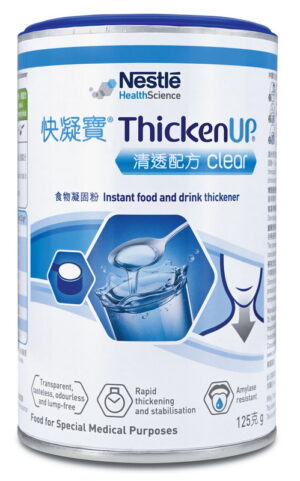 One of the main ingredients is Xanthan Gum so using Xanthan Gum can be a lot cheaper.
One of the main ingredients is Xanthan Gum so using Xanthan Gum can be a lot cheaper.
ThickenUP can be a good solution if you can’t find Xanthan or Guar.
The below shot is from when I first started using ThickenUP. I didn’t know how much powder to use and the liquid started far too thick. Throughout the day I had to keep adding more and more water. I eventually started getting Worthington Jets and collisions but not to the usual standard. I did find getting cups rather than umbrellas was a lot easier. After lots of testing I dialled in the amount of powder to use and started getting better results.
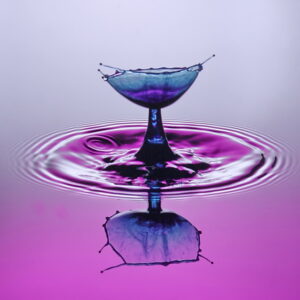
Mixing liquids
I generally use a level teaspoon of guar gum or xantham powder with 1 litre of warm water. I blend this is an old electric blender and then strain with muslin cloth to remove any bits and reduce the bubbles.
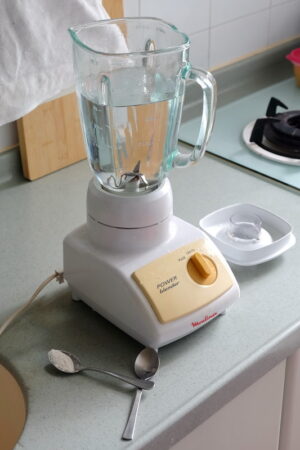
This gives me a slightly cloudy thick liquid which I dilute as I use it. To the base liquid I will add cold water and colours, normally food colourings.
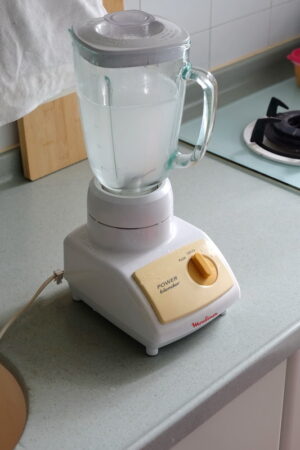
I use both guar and xantham, and, although I do tend to prefer guar, if I’m honest, I normally use whatever I find first.
Both guar and xantham produce cloudy liquids but guar tends to produce a whiter colour. Xantham can be a little grey.
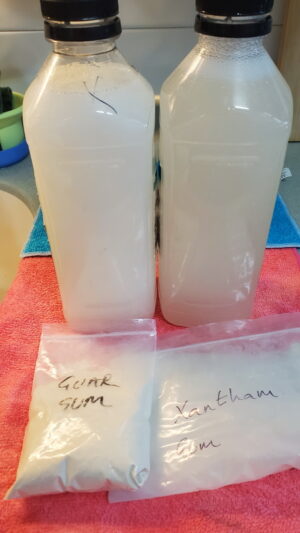
Blending ensures no lumps but it does create a lot of bubbles, and while a bubbly liquid can produce some nice results, it is normally better to let it set a while before using.
Bottle Reservoir: Colouring
To the guar gum / xantham mix I add regular food colourings. I started with a very cheap Chinese brand I found at a local wet market. Fairly good for water drop photography. Not sure if I would put them in food.
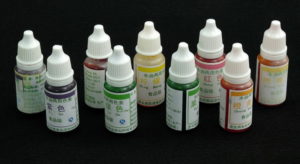
I later found the Butterfly brand colourings at a local bakery supplies shop. These give really nice, deep colours. Bigger bottles as well.

Adding food colour makes a big difference to the quality of the shots and you don’t need large amounts to get really nice colours.
This is water + guar gum + Butterfly food colouring.
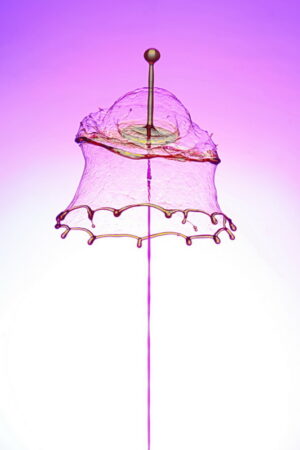
Adding a splash of milk to a water based mix makes the liquid slightly opaque and can give the mixture a painterly appearance.
This mixture is a regular water + guar gum with a bit of milk added. It has a similar, but not exactly the same, appearance as acrylic paint.
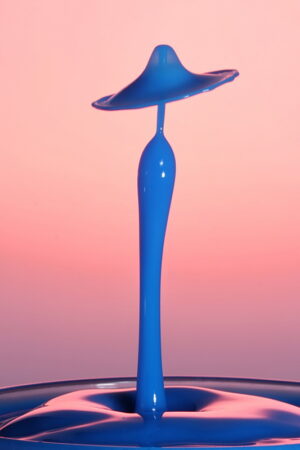
Of course, you don’t need to add colour if you do not want to. This is water + xanthan, no colour added, against a white back ground.
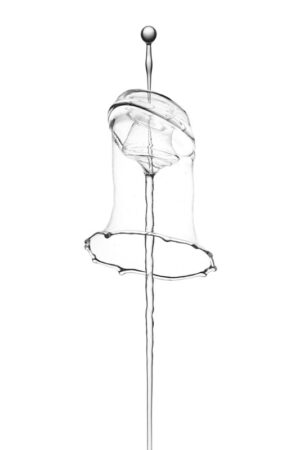
Surfactants / detergents
Adding a small squirt of detergent to the liquid can greatly change the properties of the splash/shape, picture how the skin of a bubble looks, and can give exaggerated, stretched shapes. Many different detergents can be used and one of the most popular, thanks to Corrie White’s recommendation, is natureclean’s All Purpose Cleaning Lotion
